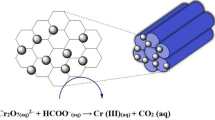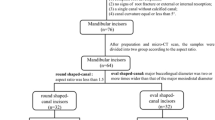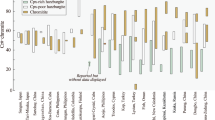Abstract
IN the report1 on the main results of our re-examination of the Piltdown material, we gave reasons for regarding the chromate staining of the mandible as indicating a deliberate attempt to match a modern bone with the mineralized cranial fragments. The actual composition of this bone (3.9 per cent nitrogen, less than 0.03 per cent fluorine) suffices to prove its modernity; but the chromate staining, combined with the artificially abraded appearance of the molars, indicates that it is not only modern but also fraudulent.
This is a preview of subscription content, access via your institution
Access options
Subscribe to this journal
Receive 51 print issues and online access
$199.00 per year
only $3.90 per issue
Buy this article
- Purchase on SpringerLink
- Instant access to full article PDF
Prices may be subject to local taxes which are calculated during checkout
Similar content being viewed by others
References
Weiner, J. S., Oakley, K. P., and Clark, W. E. Le Gros, Bull. Brit. Mus. (Nat. Hist.), Geol. Ser., 2, No. 3 (1953).
Doubts about their genuineness were expressed in 1949 in a handbook of the British Museum (Nat. Hist.), “Man the Tool-Maker”, 1st edit., pp. 69–70.
Dawson, C., and Woodward, A. S., Quart. J. Geol. Soc. Lond., 69, 122, footnote 1, pl. xvi, fig. 2 (1913).
Author information
Authors and Affiliations
Rights and permissions
About this article
Cite this article
OAKLEY, K., WEINER, J. Chemical Examination of the Piltdown Implements. Nature 172, 1110 (1953). https://doi.org/10.1038/1721110a0
Issue date:
DOI: https://doi.org/10.1038/1721110a0



